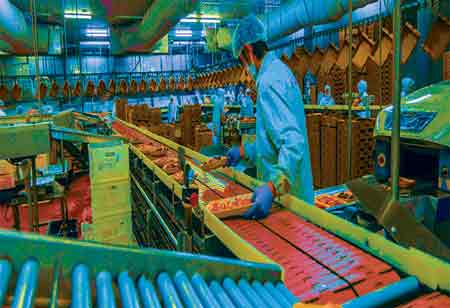THANK YOU FOR SUBSCRIBING
Be first to read the latest tech news, Industry Leader's Insights, and CIO interviews of medium and large enterprises exclusively from Food and Beverage Tech Review
The Importance of Global Food Safety Efforts
As consumers around the world face triple threats of malnutrition, unsafe food, and increasing food insecurity, the World Health Organization (WHO) and Codex Alimentarius convened World Food Safety Day this year to highlight how safer food lea

By
Food and Beverages Tech Review | Monday, March 13, 2023
Stay ahead of the industry with exclusive feature stories on the top companies, expert insights and the latest news delivered straight to your inbox. Subscribe today.
The food system can benefit from emerging strategies that engage and empower key stakeholders.
FREMONT, CA: As consumers around the world face triple threats of malnutrition, unsafe food, and increasing food insecurity, the World Health Organization (WHO) and Codex Alimentarius convened World Food Safety Day this year to highlight how safer food leads to better health. The World Health Assembly has recently adopted the WHO Global Food Safety Strategy, and today we celebrate that agreement. Foodborne diseases affect one in ten people worldwide, and one in three suffer from malnutrition. Additionally, many nutrient-dense foods contain foodborne pathogens associated with the highest foodborne disease burden in low- and middle-income countries (LMIC).
A multilateral organization like the WHO provides a roadmap for key stakeholders to act in a coordinated manner through global strategies.
Governmental: National governments are encouraged to modernize their food safety programs to protect consumers and food businesses from the consequences of unsafe food by developing or updating food safety implementation plans. Although many national agencies play a role in food safety, they often need more effective coordination in implementing and enforcing food safety policies. As legislation is often outdated, WHO recommends updating standards and guidance and appropriate compliance, verification, and enforcement activities. The government should also link health care and disease surveillance to food safety programs to ensure food safety. A robust surveillance program must identify foodborne hazards for preventive control programs, which are at the core of food safety in the modern era. Consumers and food businesses can both be protected from the many consequences of unsafe food by government action.
Public: The critical gaps resulting in this unacceptable foodborne disease burden are not solely the government's responsibility. Every actor in the food system plays a role in food safety: the farmers, ranchers, processors, retailers, consumers, and chefs who prepare tasty and nutritious foods. Increasing food safety doesn't require rocket science - many proven methods can increase protections throughout the food chain, such as Good Manufacturing Practices, HACCP, and preventive controls. Engaging consumers through approaches like WHO's 5 Keys to Safer Food is crucial to our success. Emerging strategies, such as EatSafe's informal sector interventions, can also be deployed to engage and empower key stakeholders in the food system.
Food safety advocates and organizations are given renewed impetus by the WHO Global Strategy for Food Safety. Through World Food Safety Day and the Food Safety Community of Practice, GAIN and WHO will work together to promote global food safety efforts, improve food safety in traditional markets and informal food sectors, and promote CODEX's development of global standards for traditional markets. The World Health Assembly in May recognized that safe food is an individual right and a shared responsibility from farm to table.
I agree We use cookies on this website to enhance your user experience. By clicking any link on this page you are giving your consent for us to set cookies. More info


However, if you would like to share the information in this article, you may use the link below:
https://www.fbtechrevieweurope.com/news/the-importance-of-global-food-safety-efforts-nwid-1540.html





